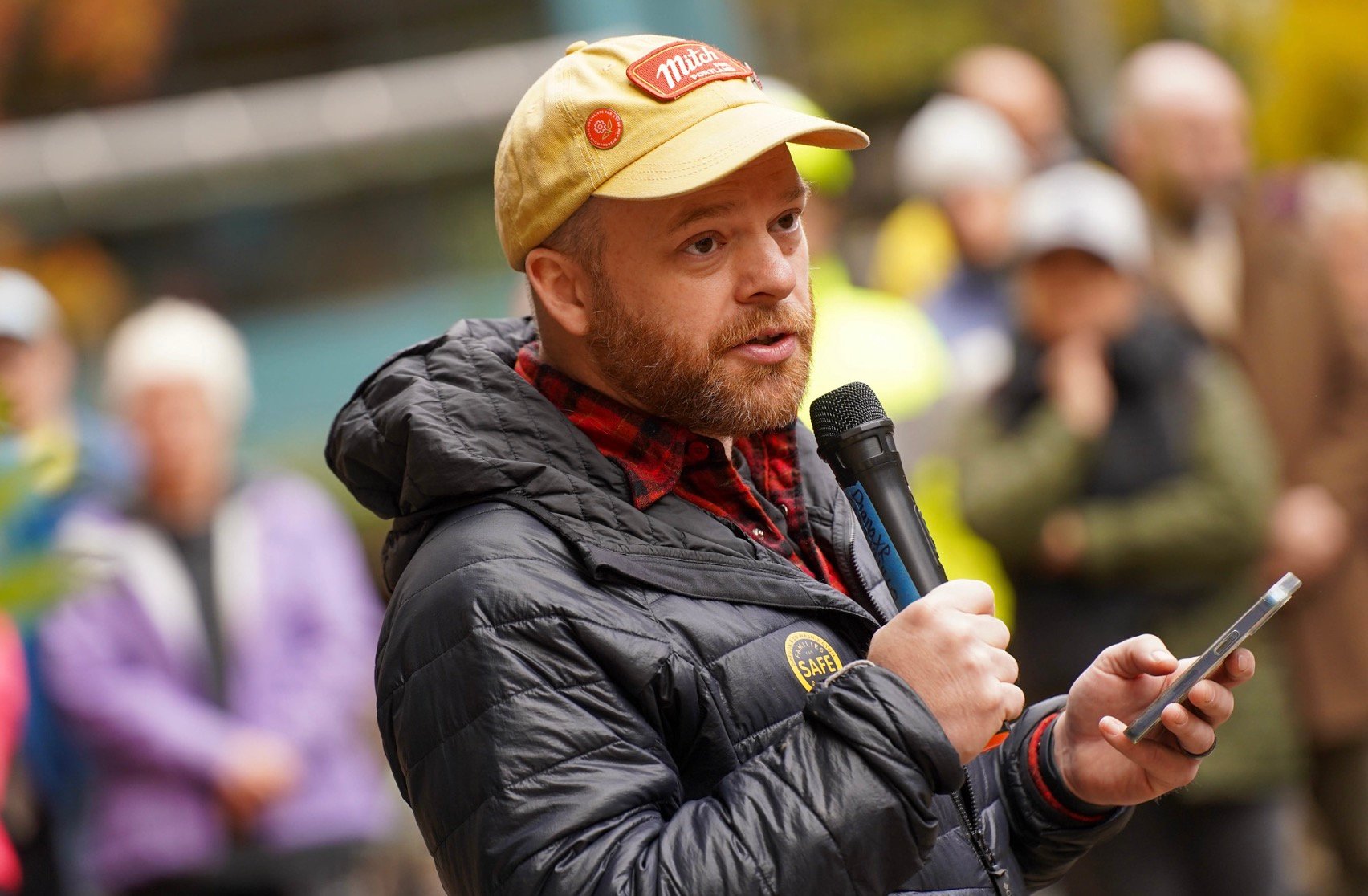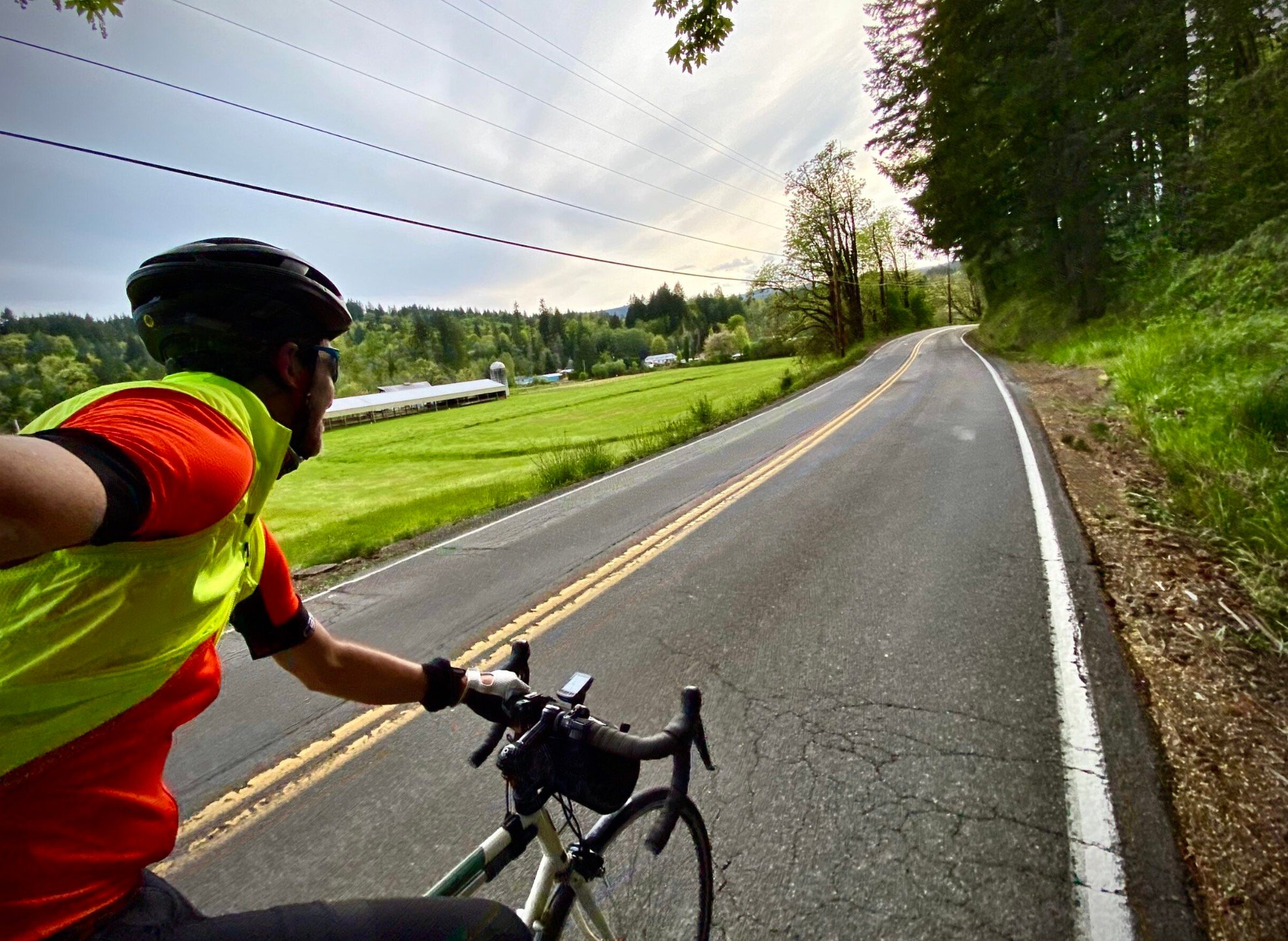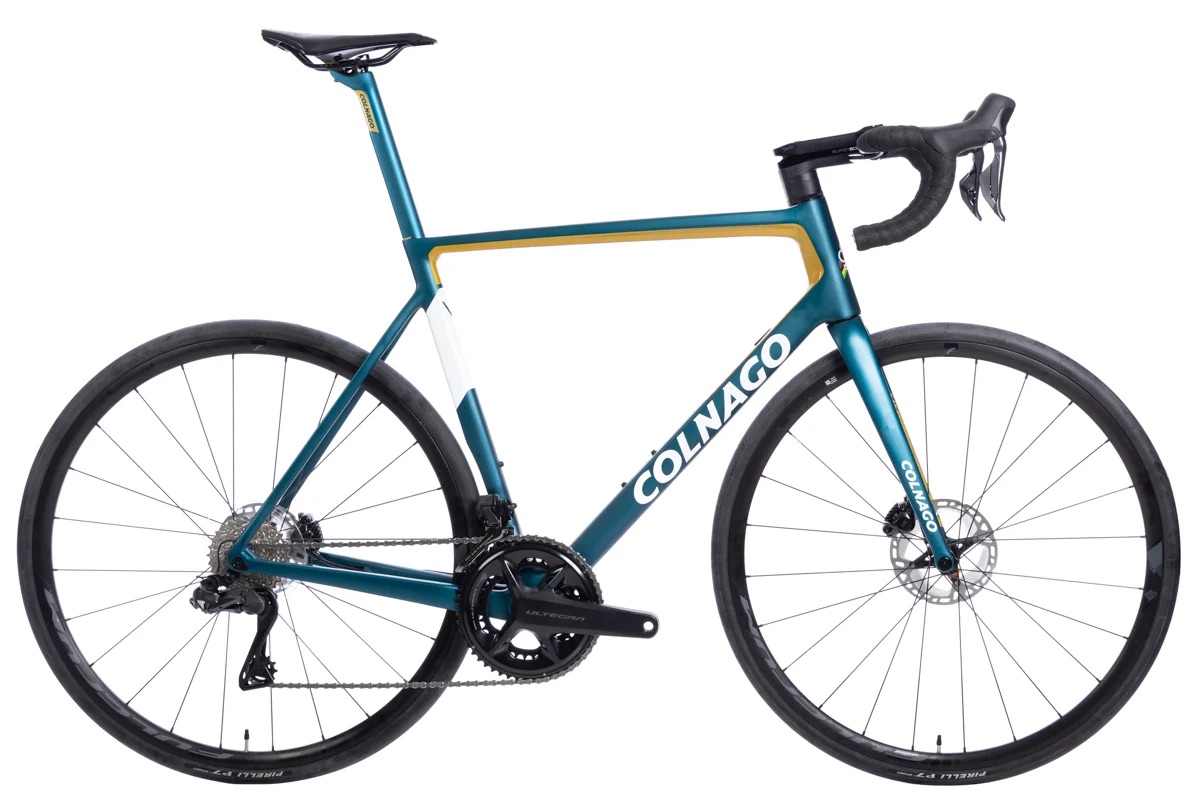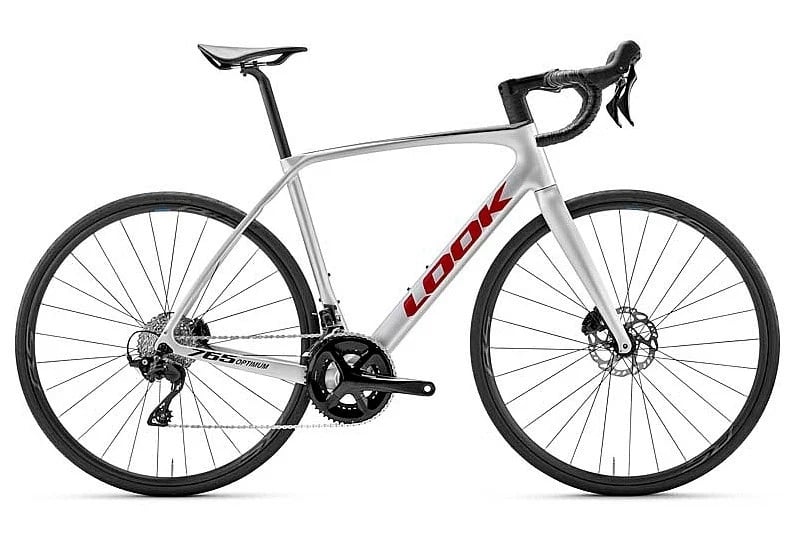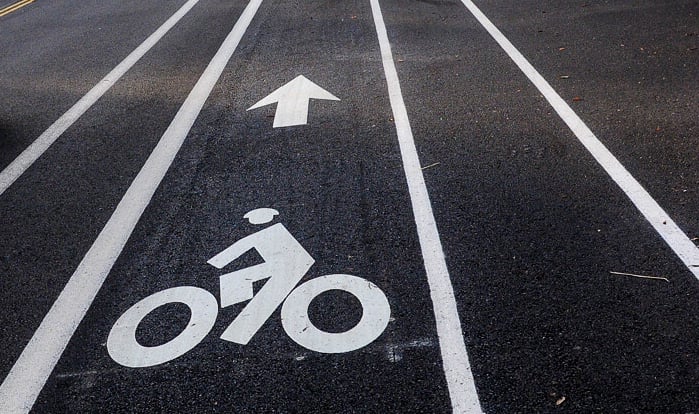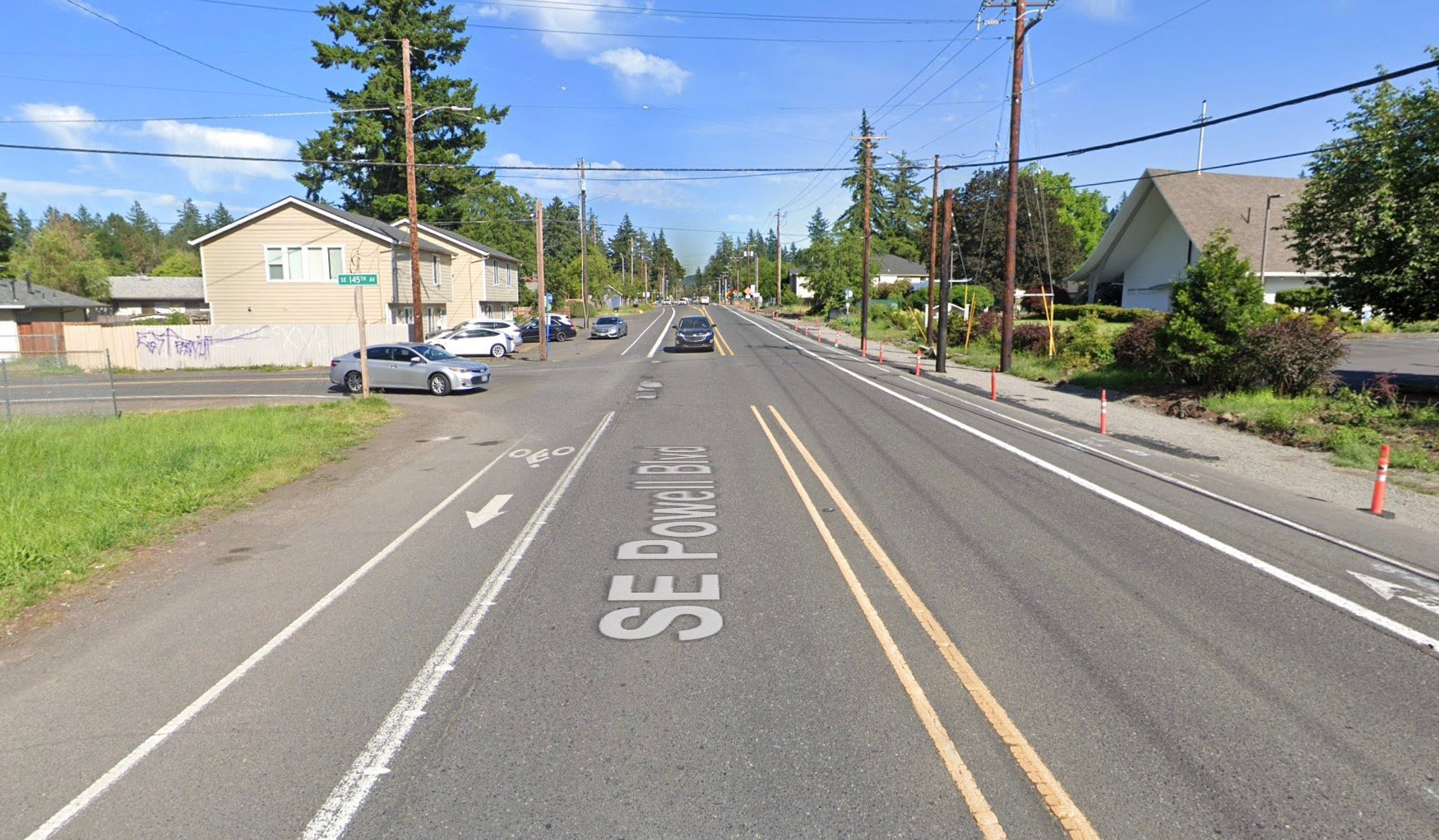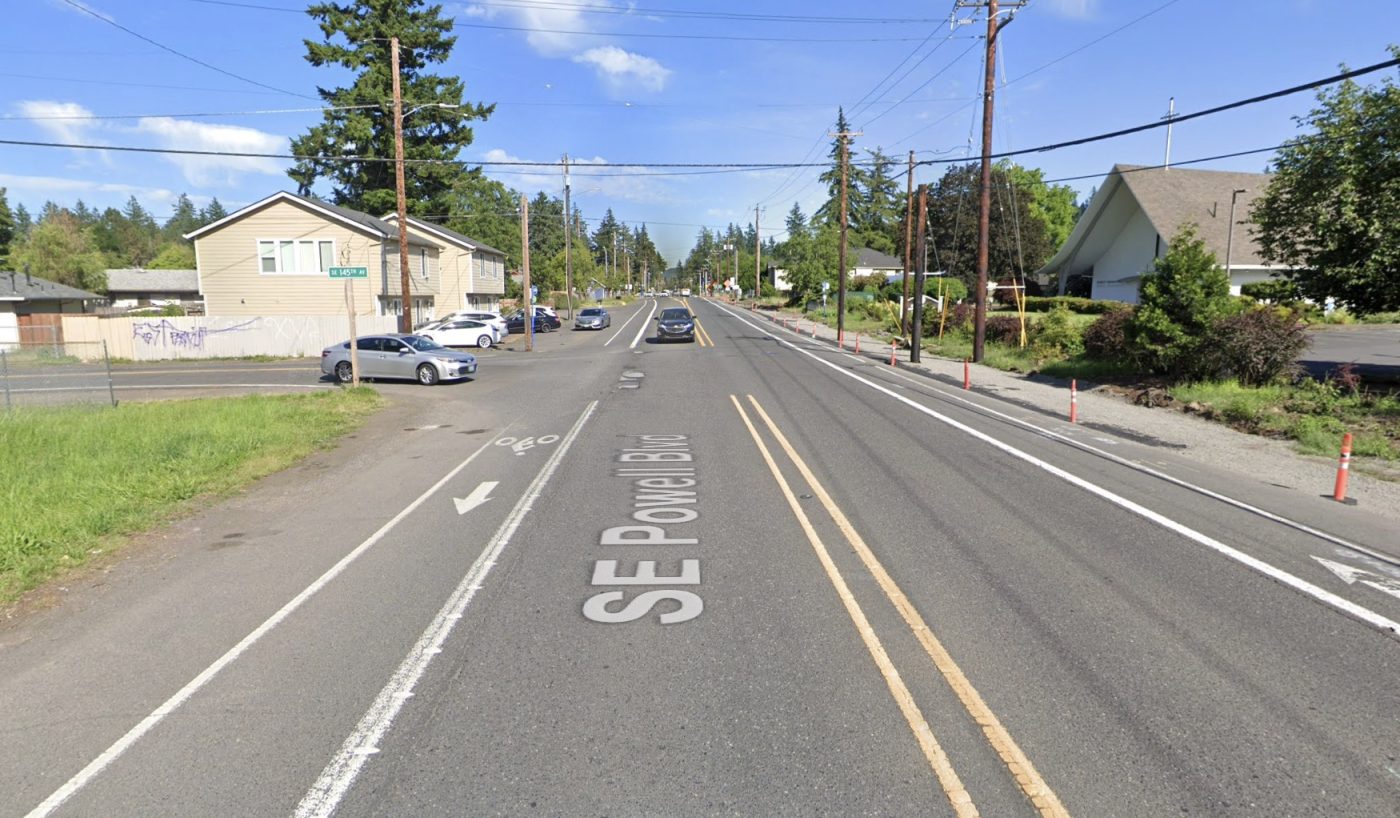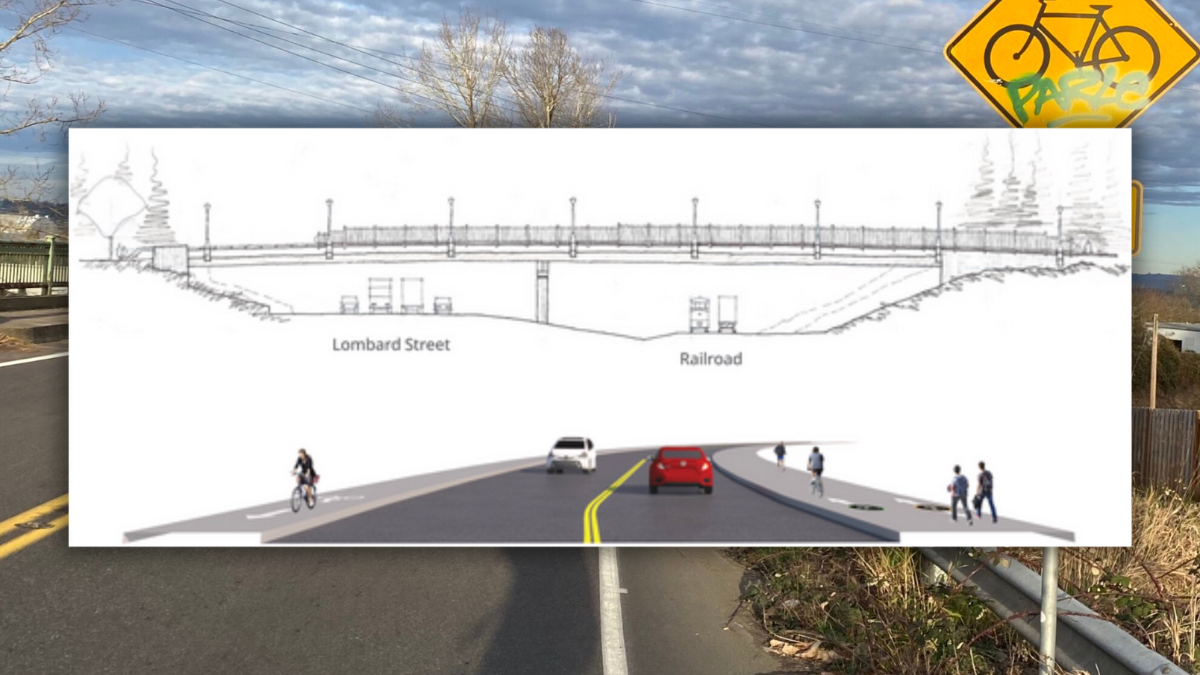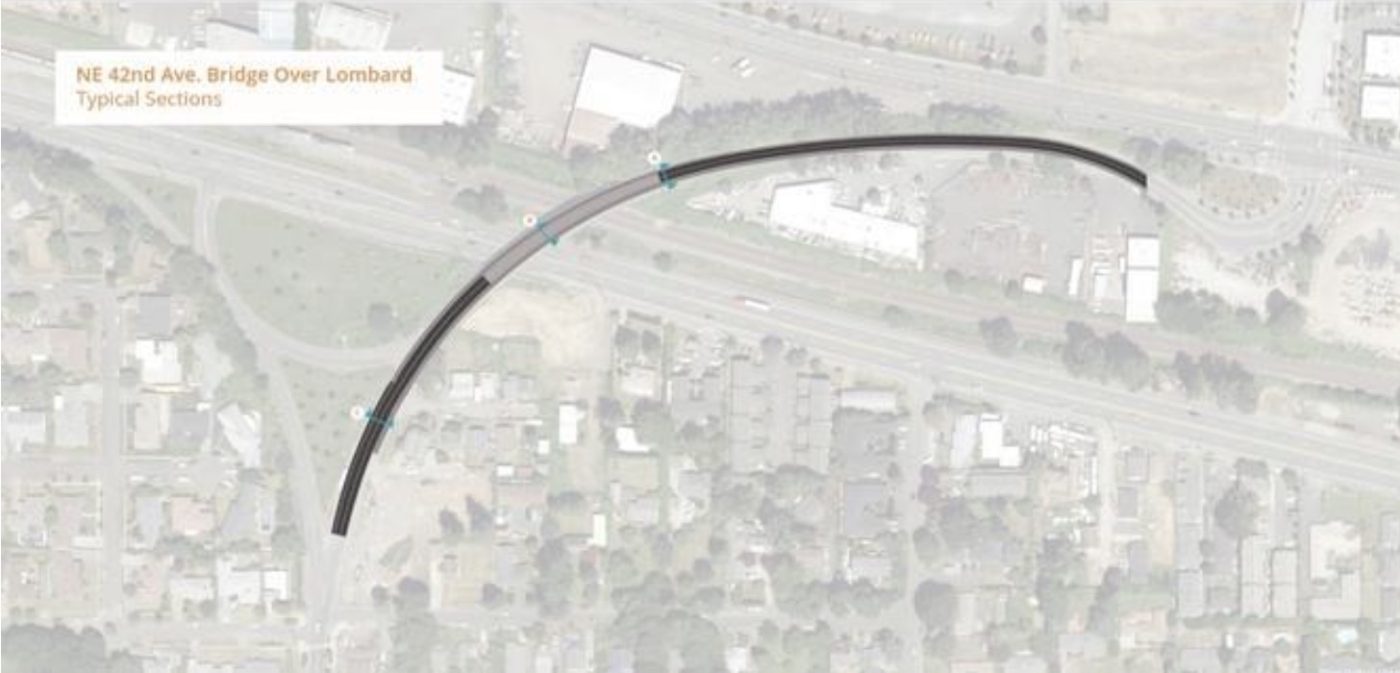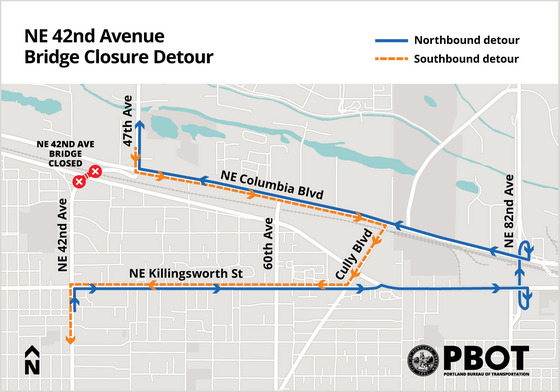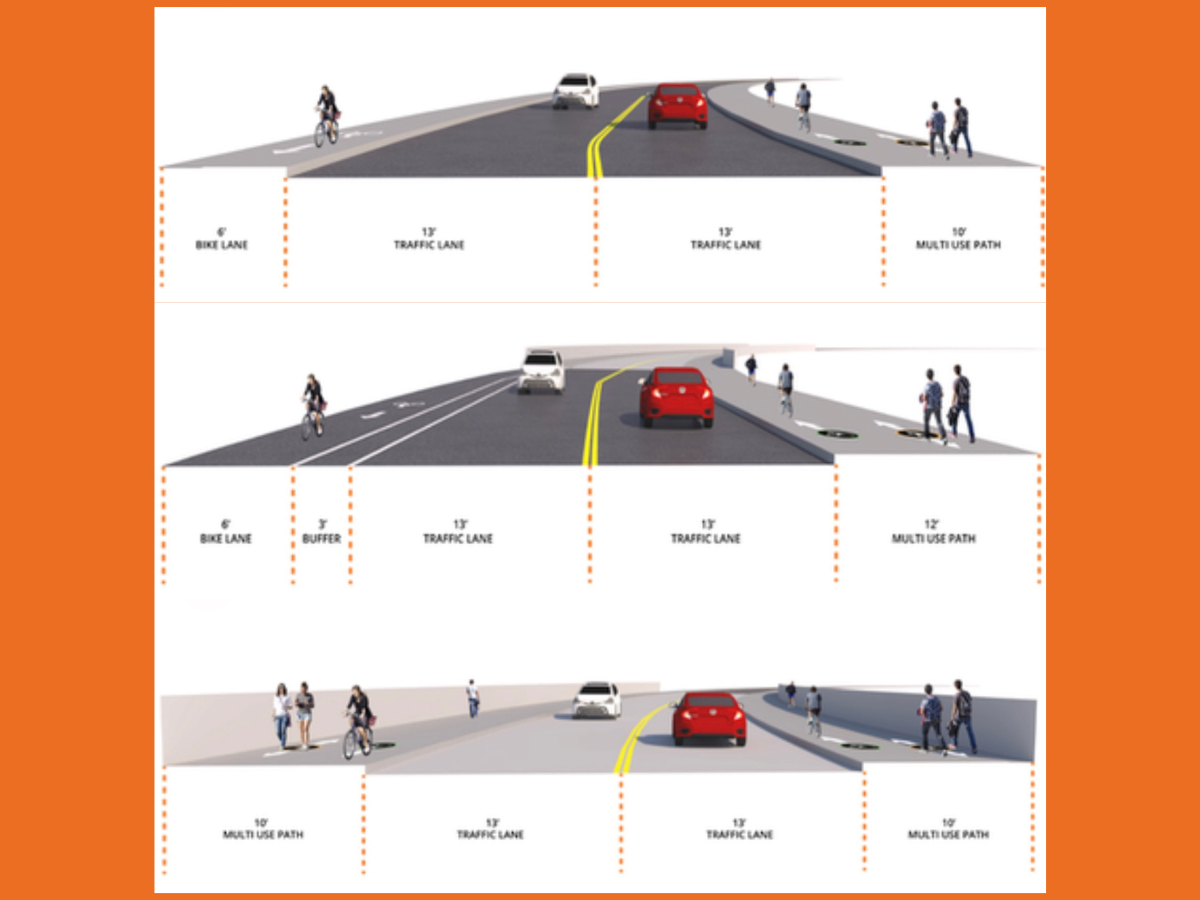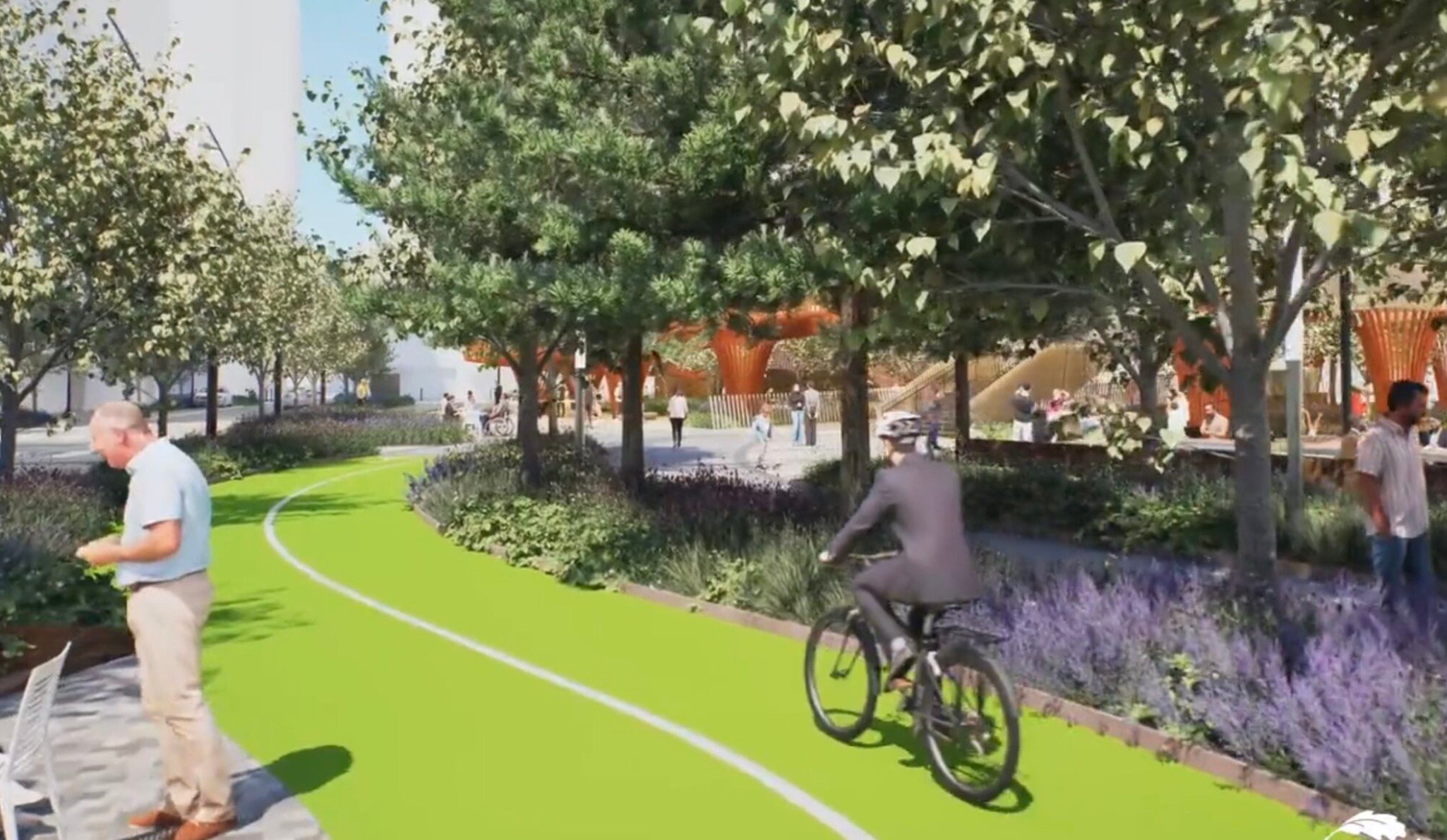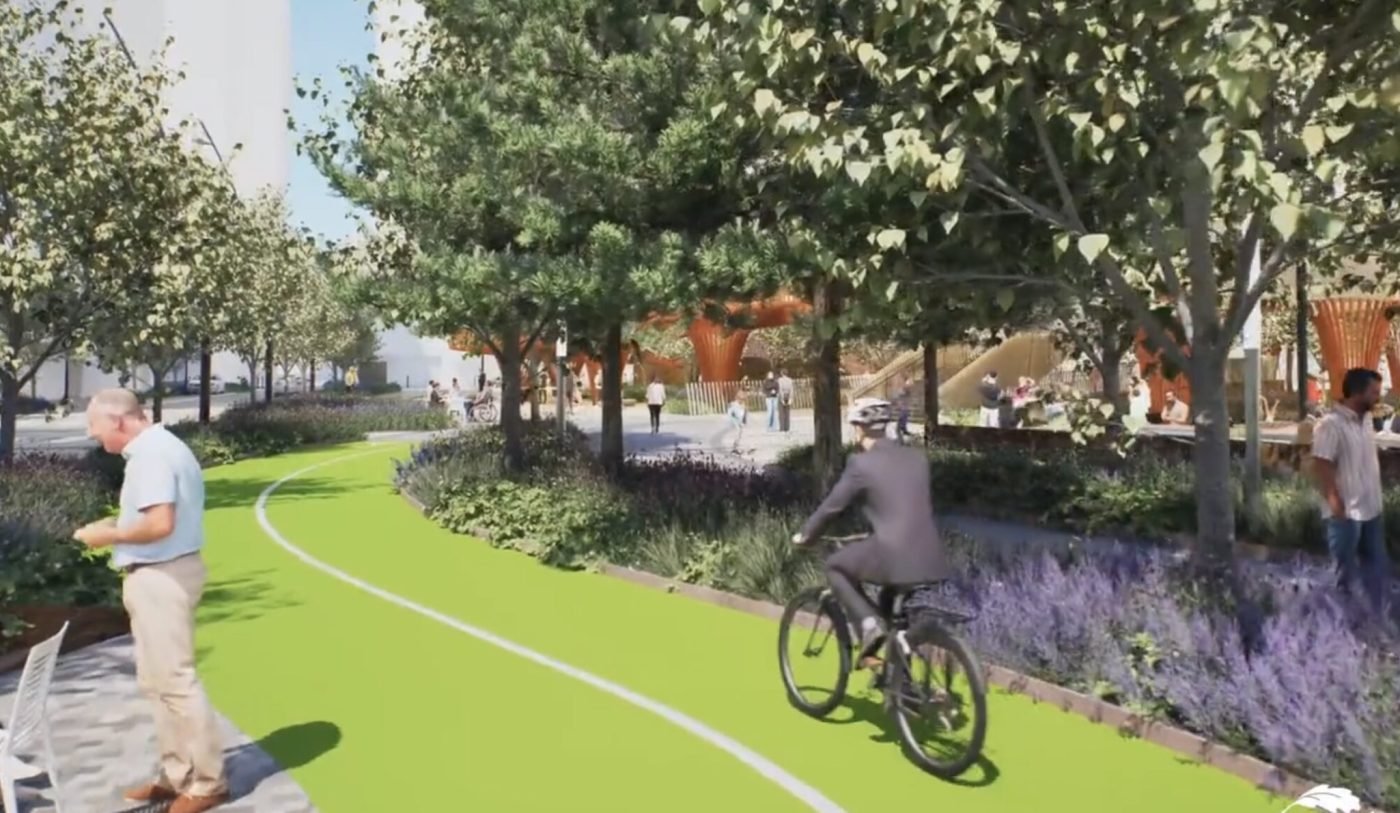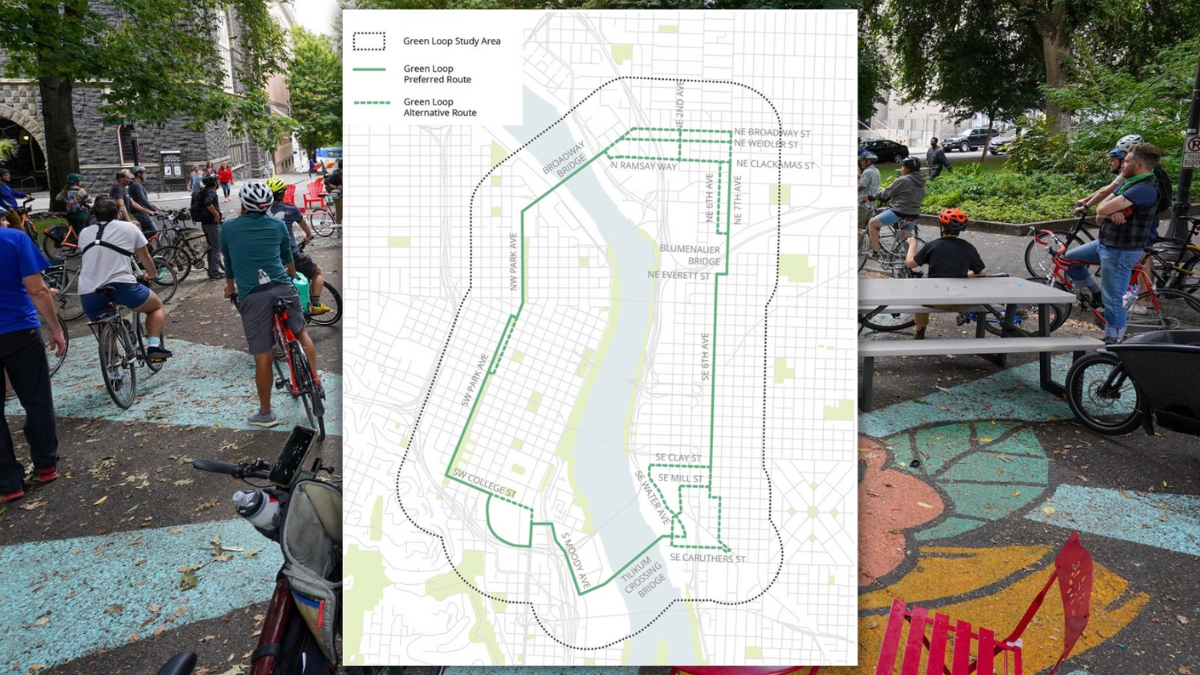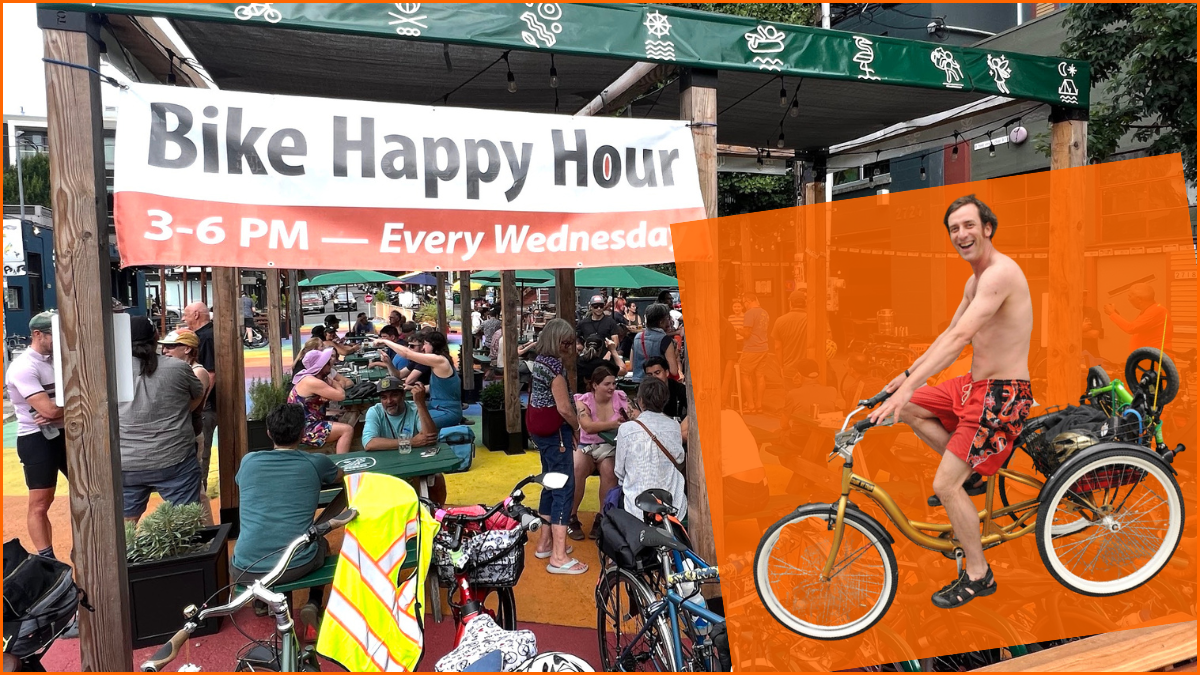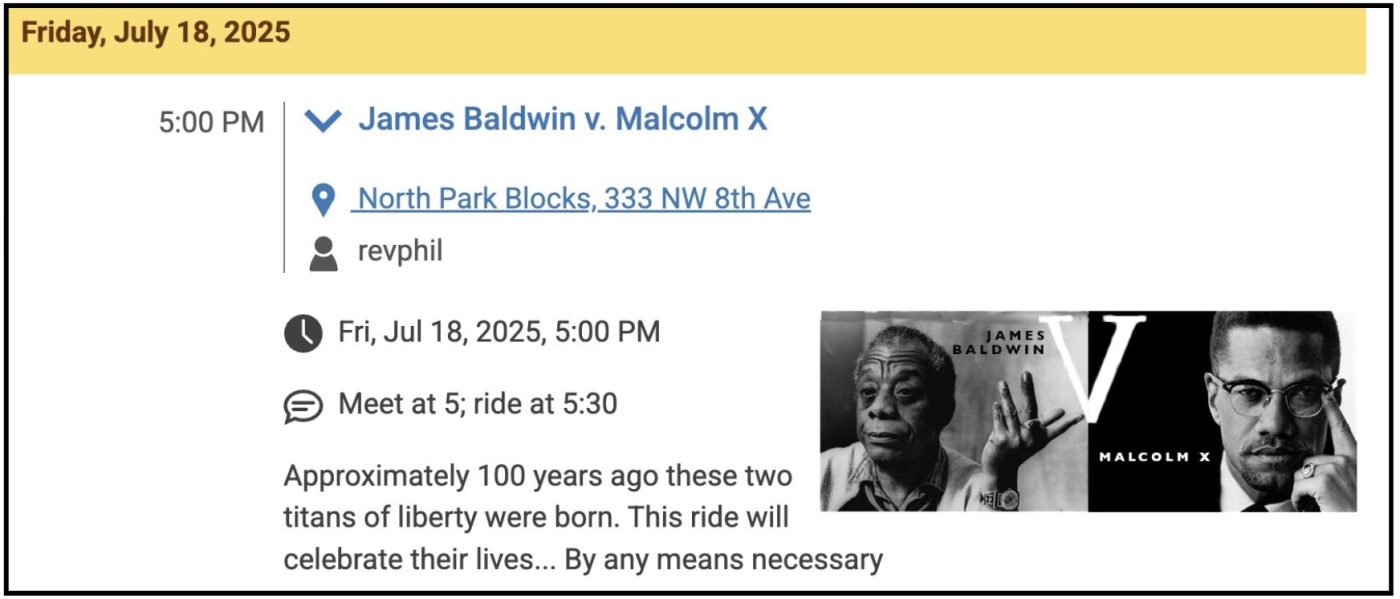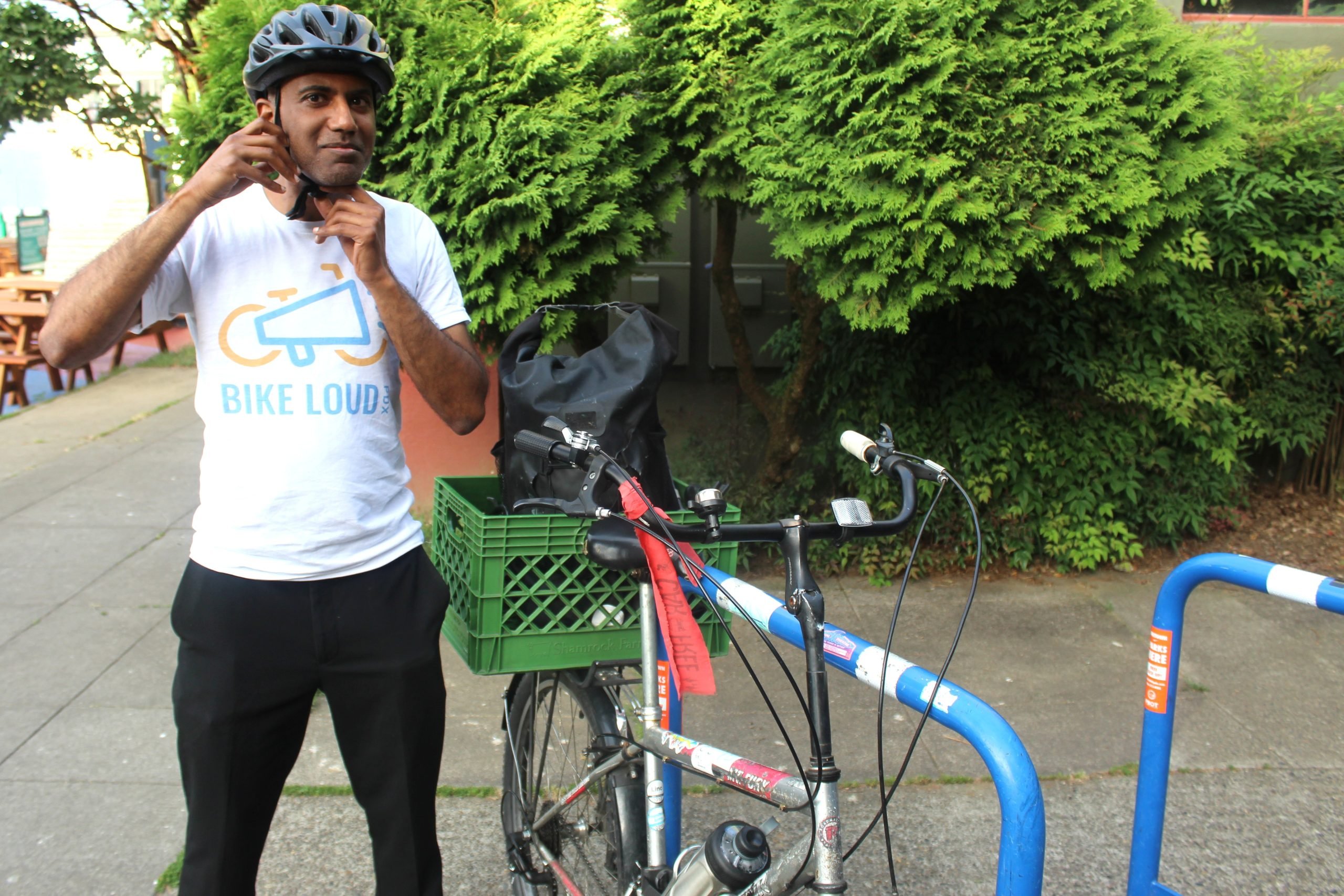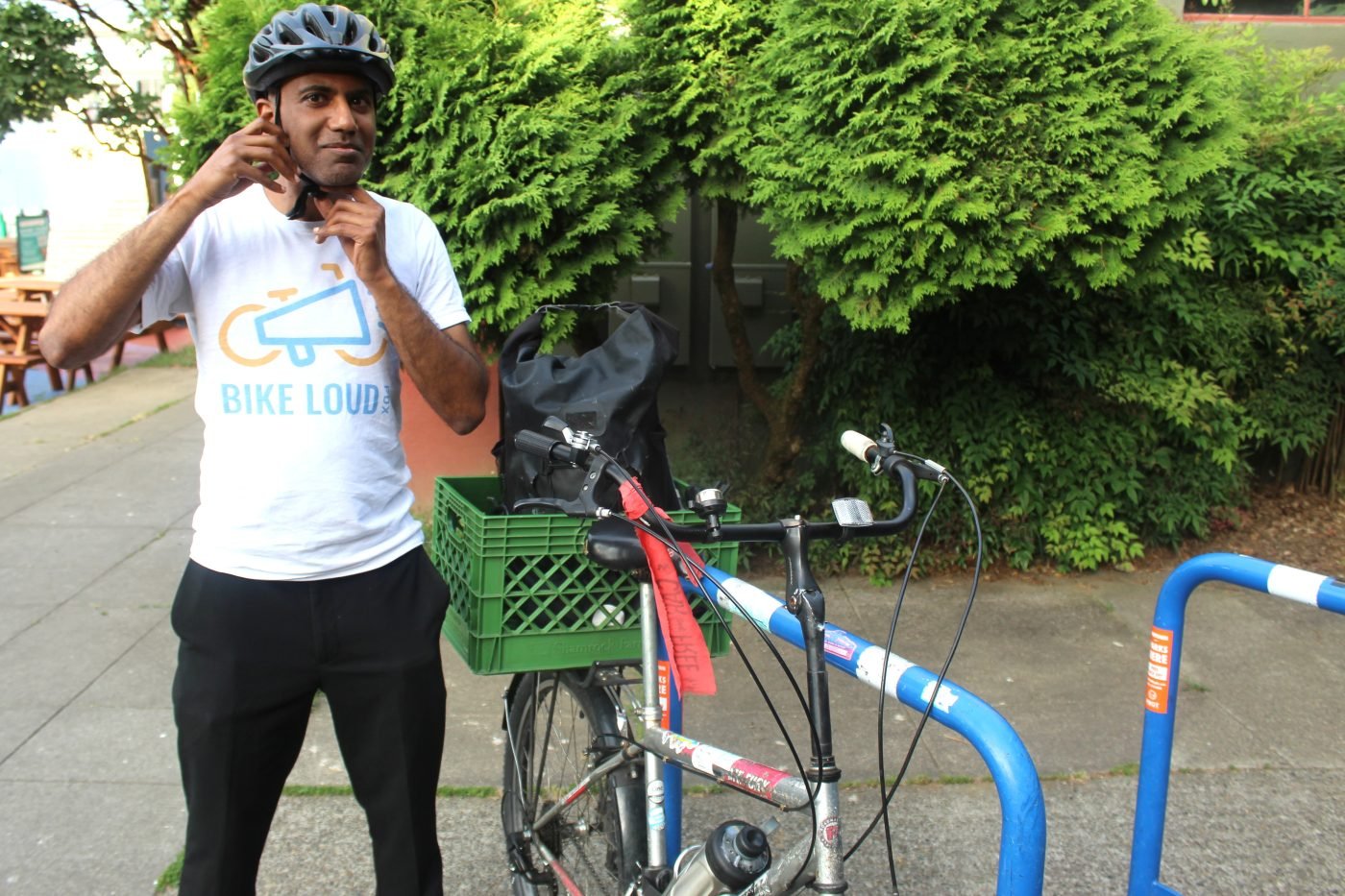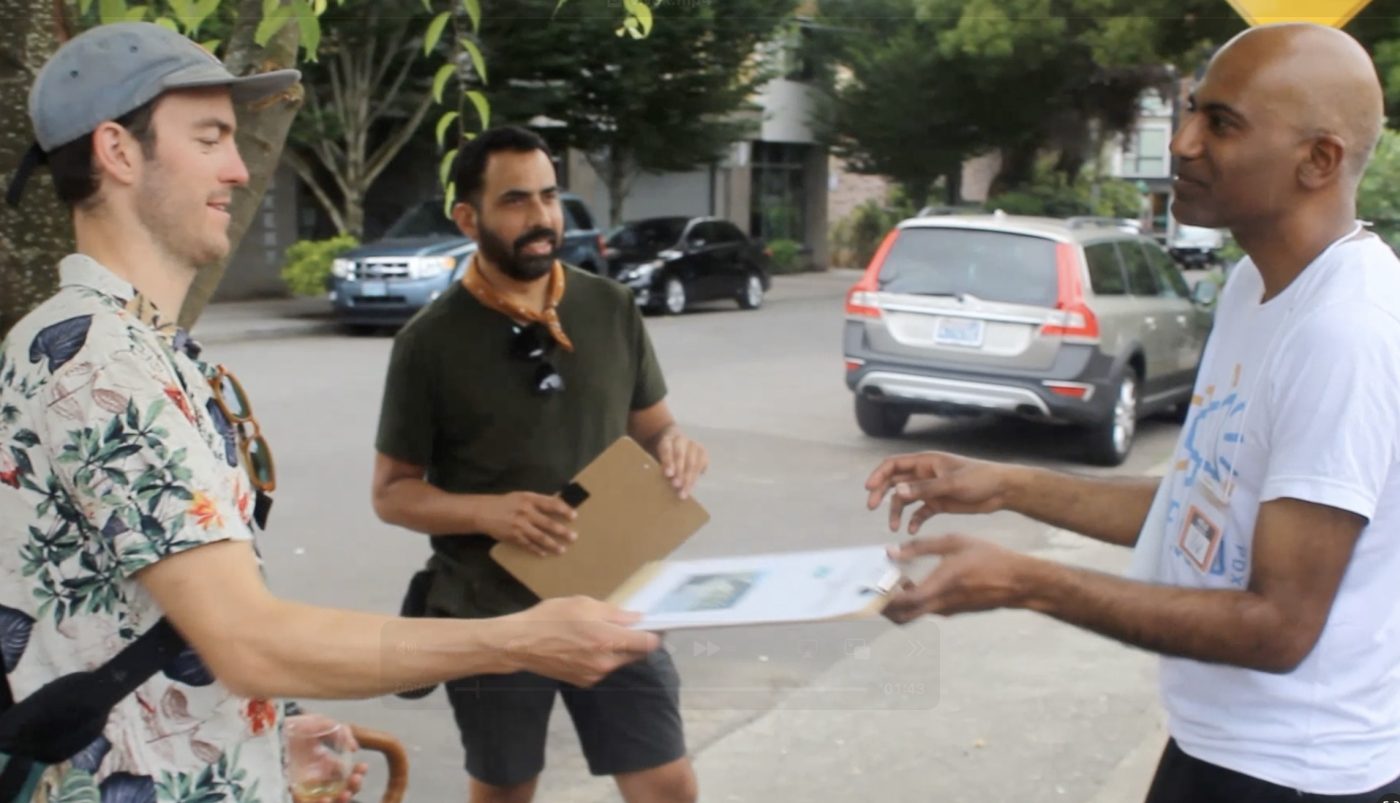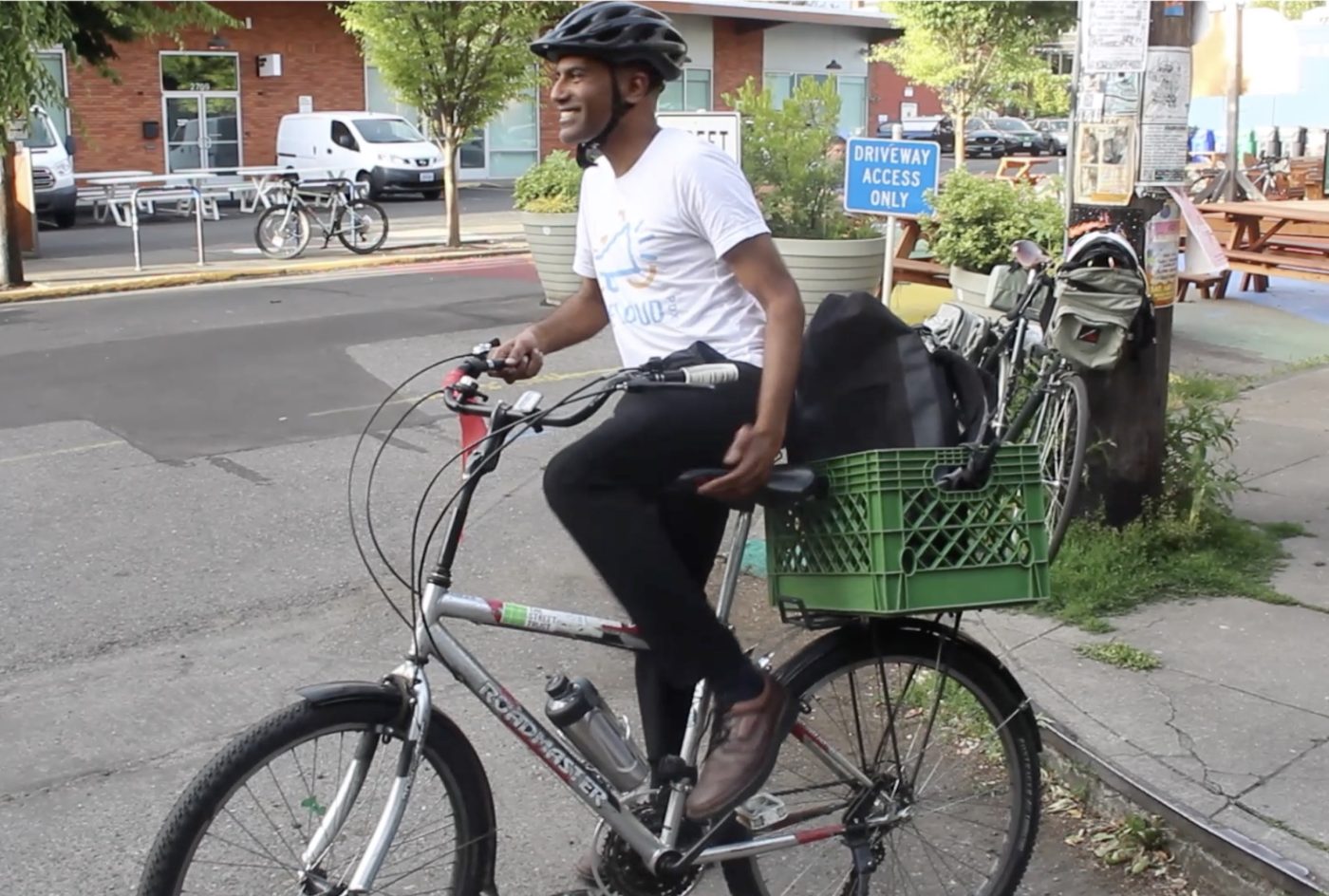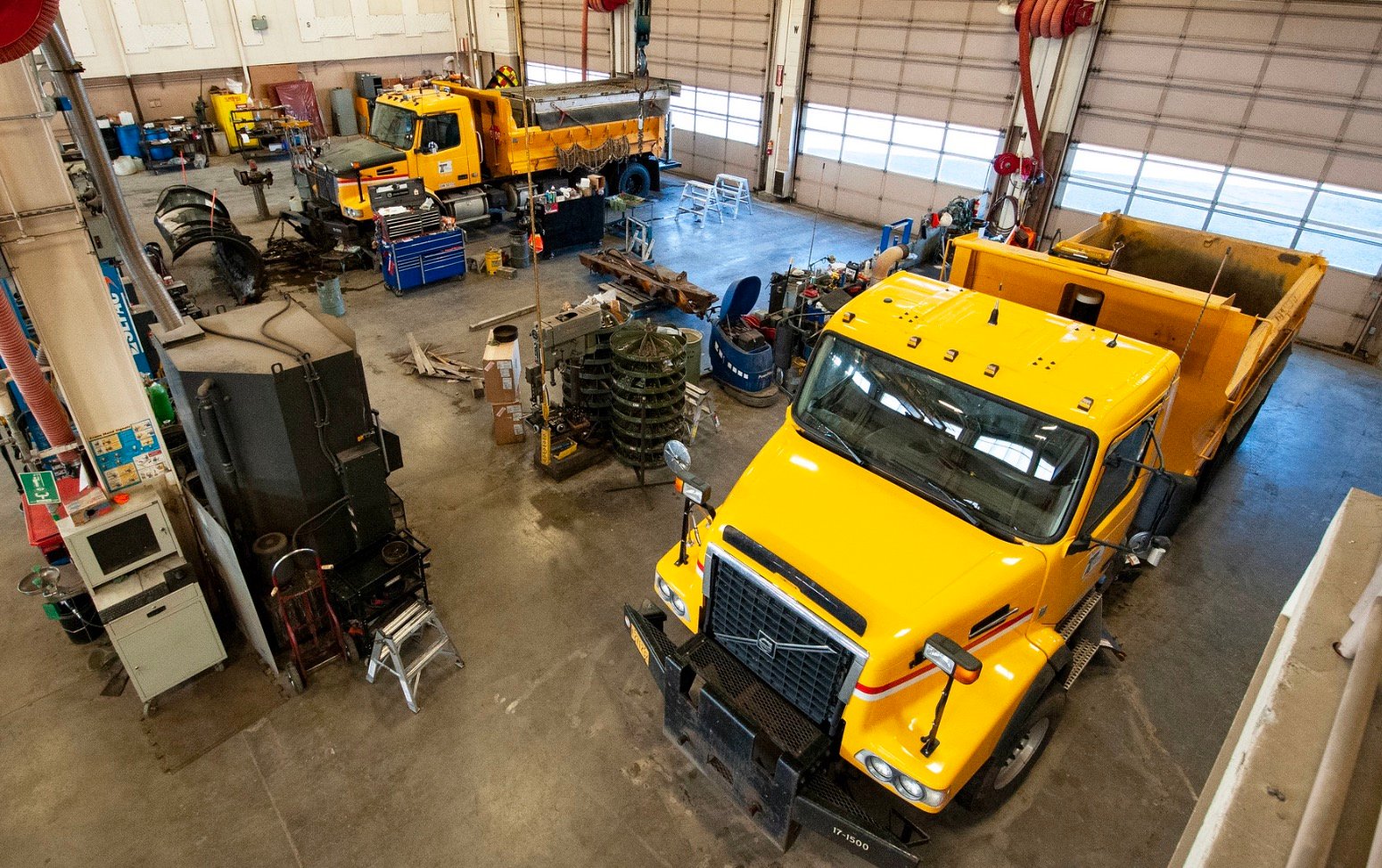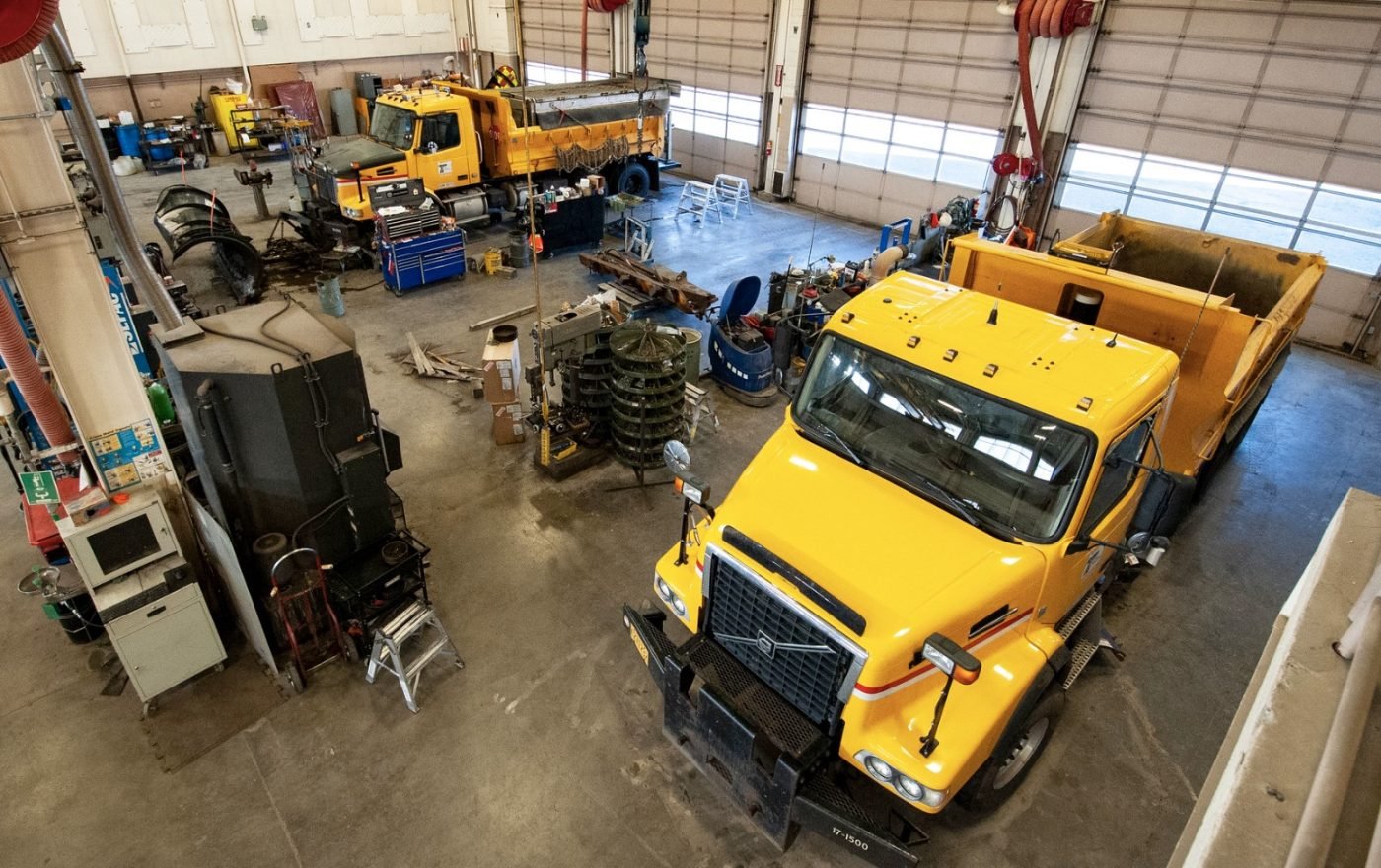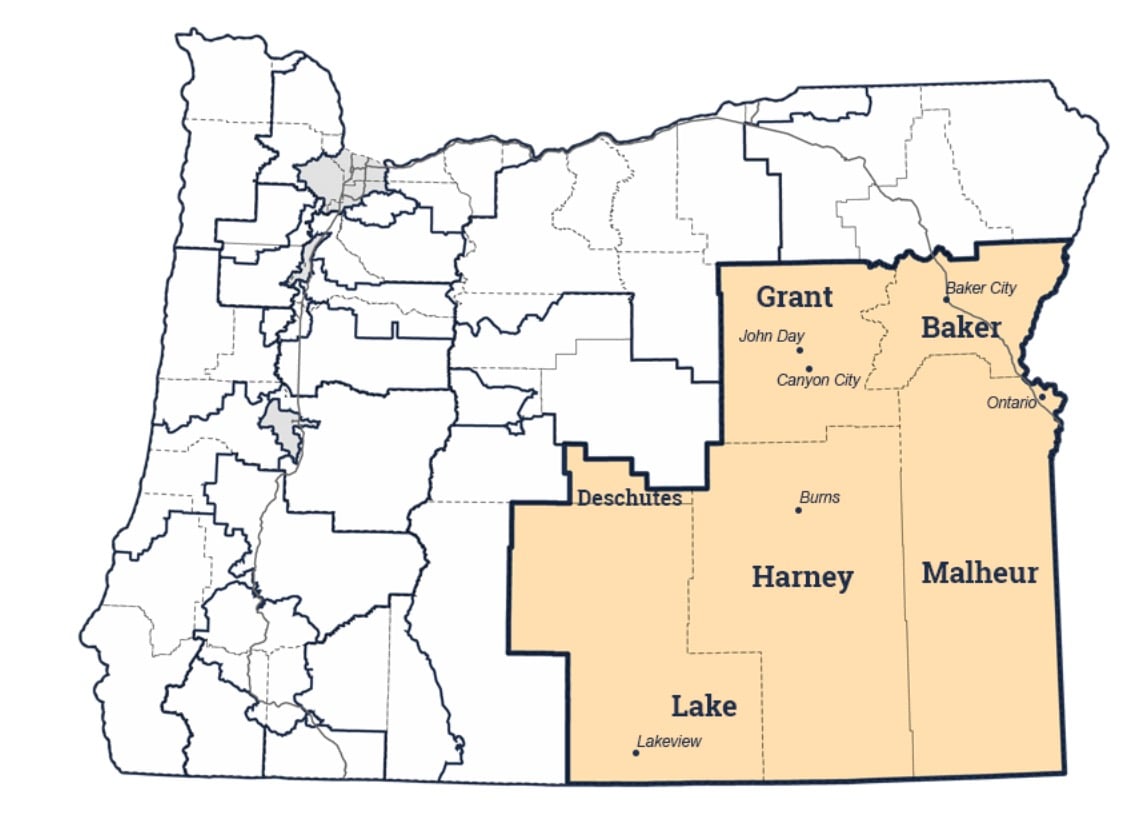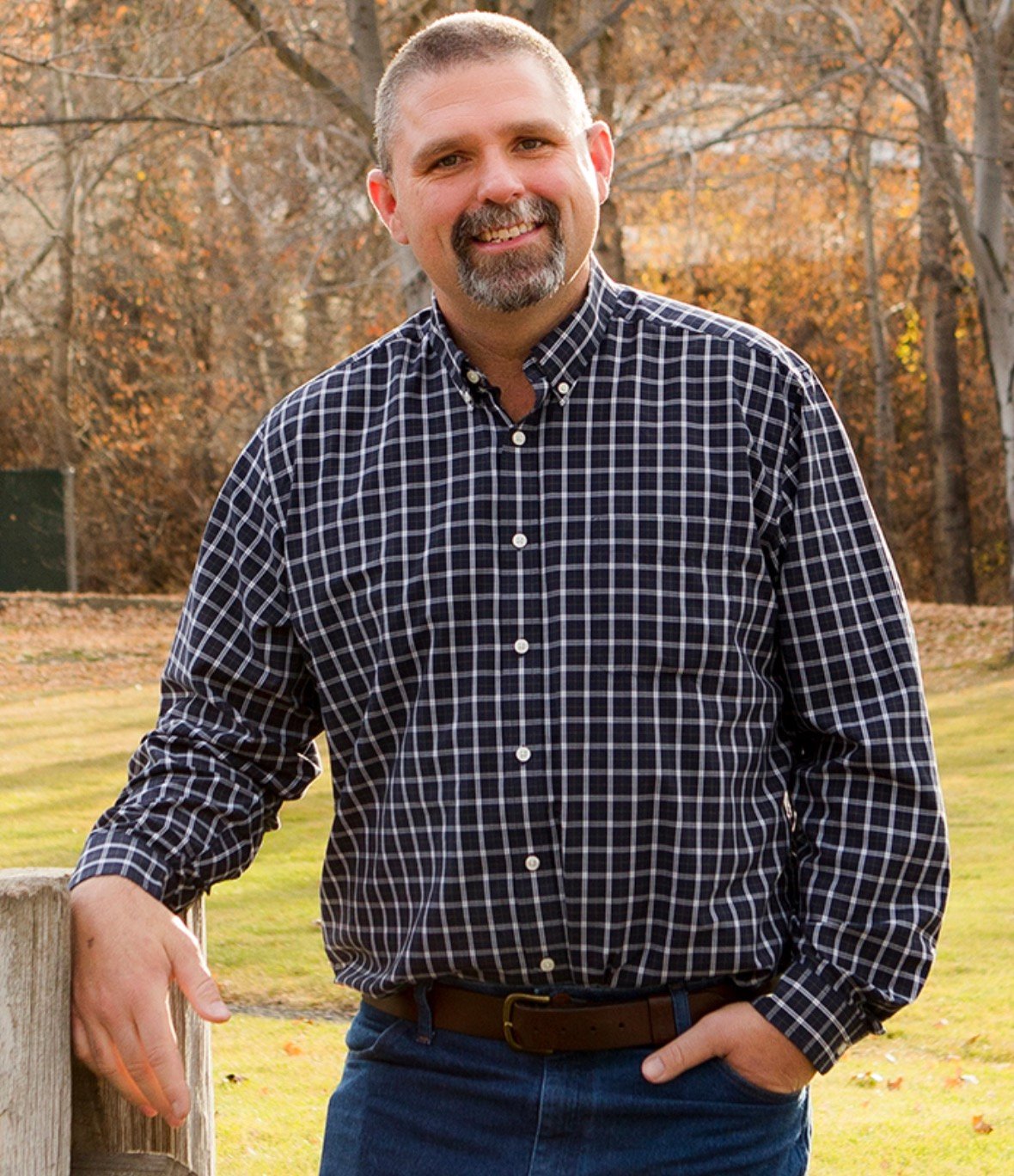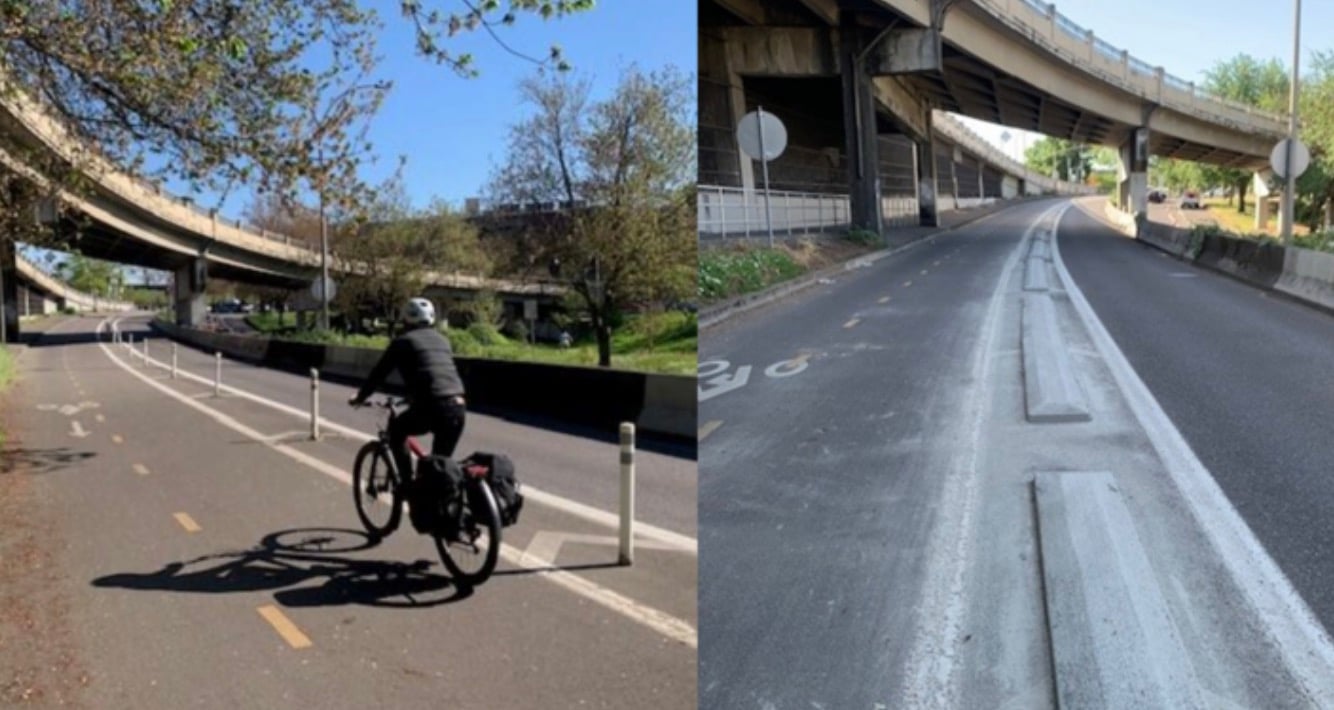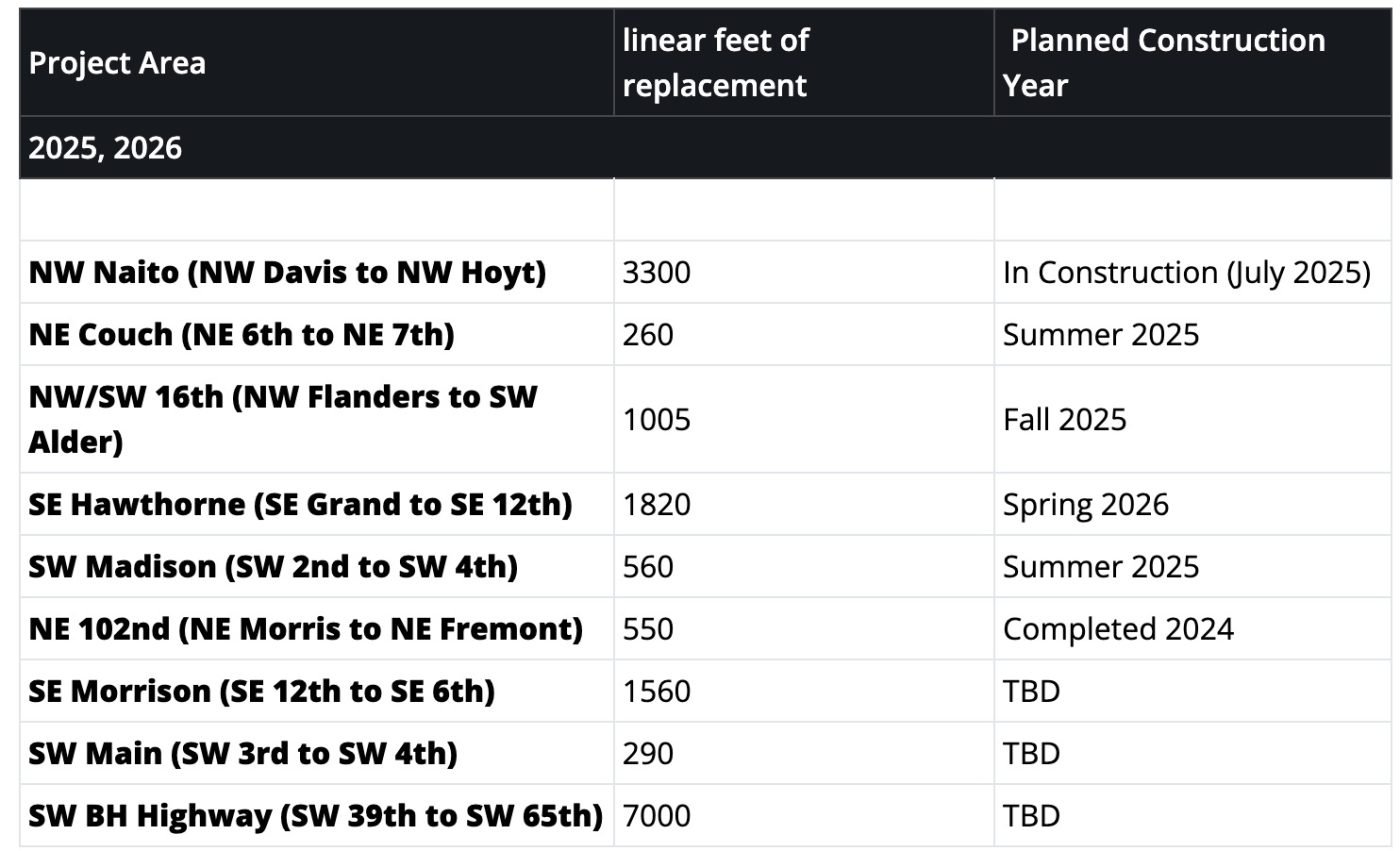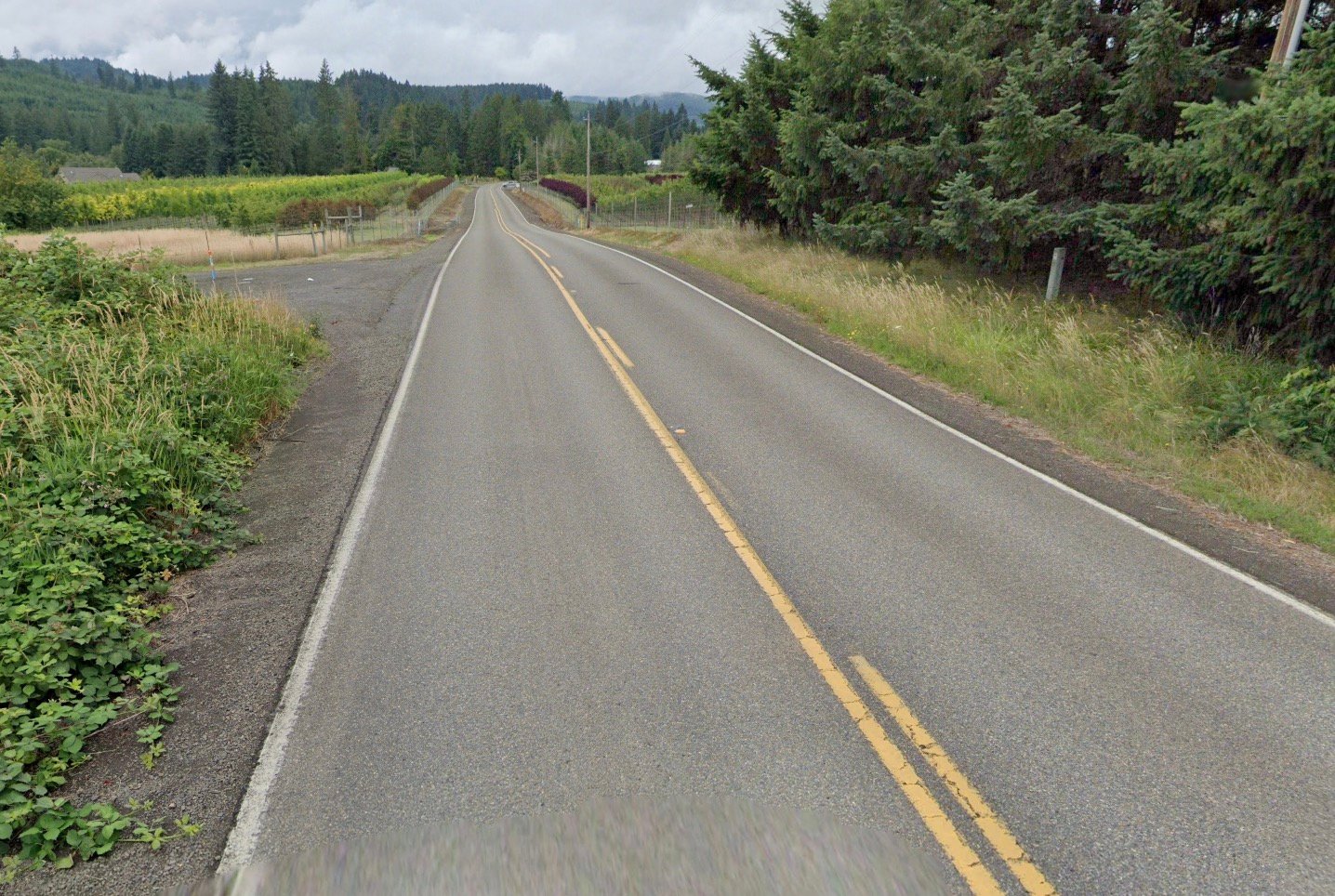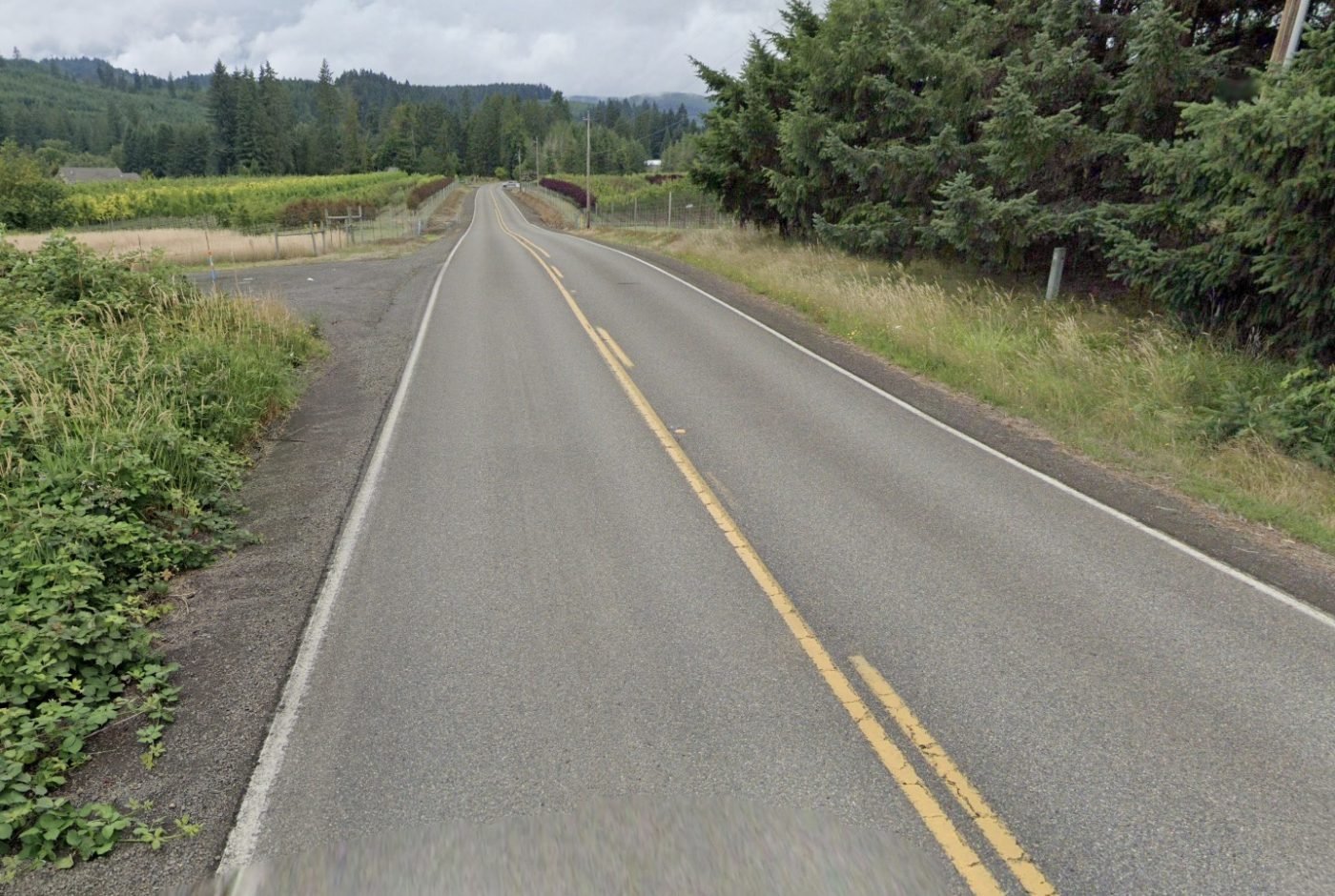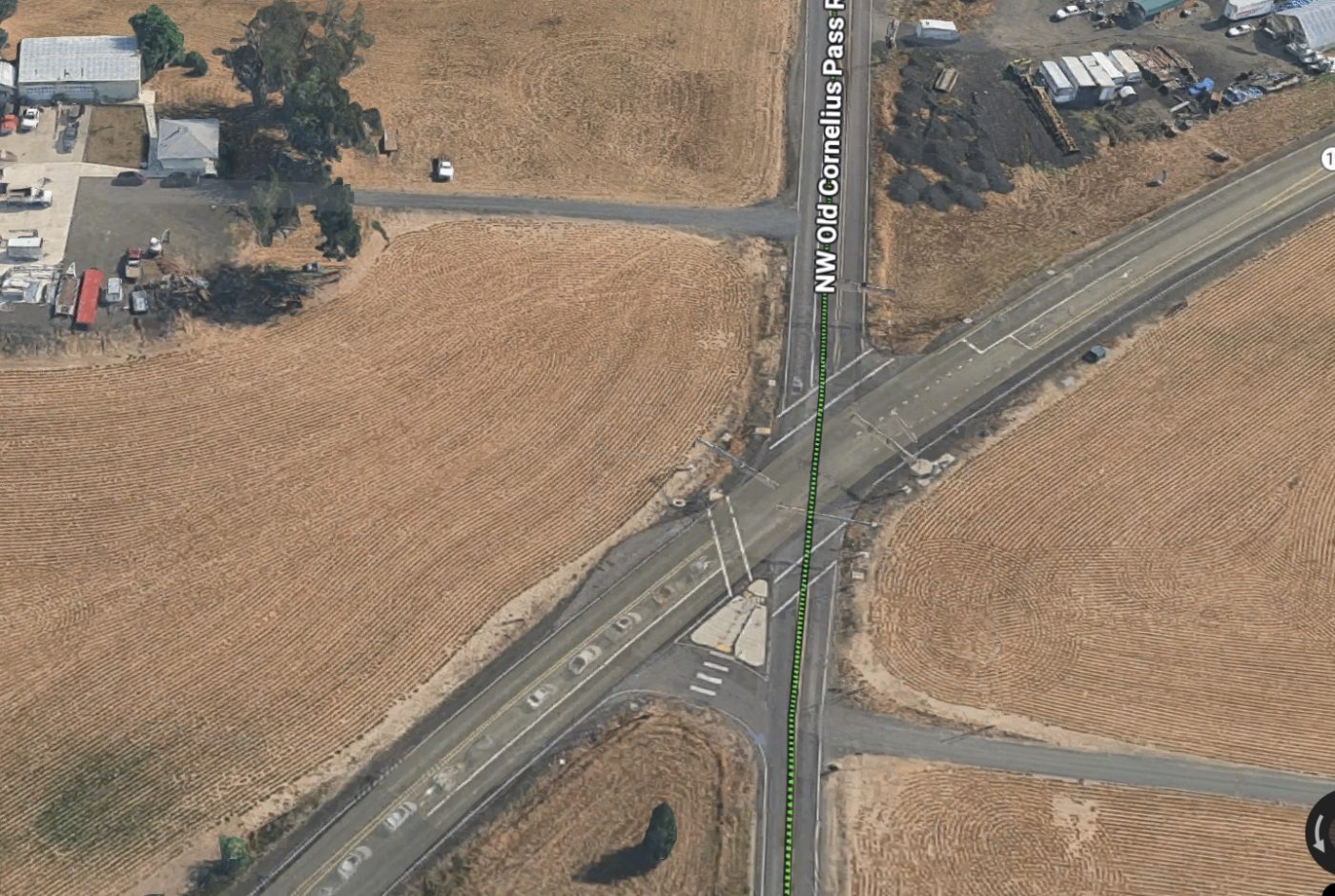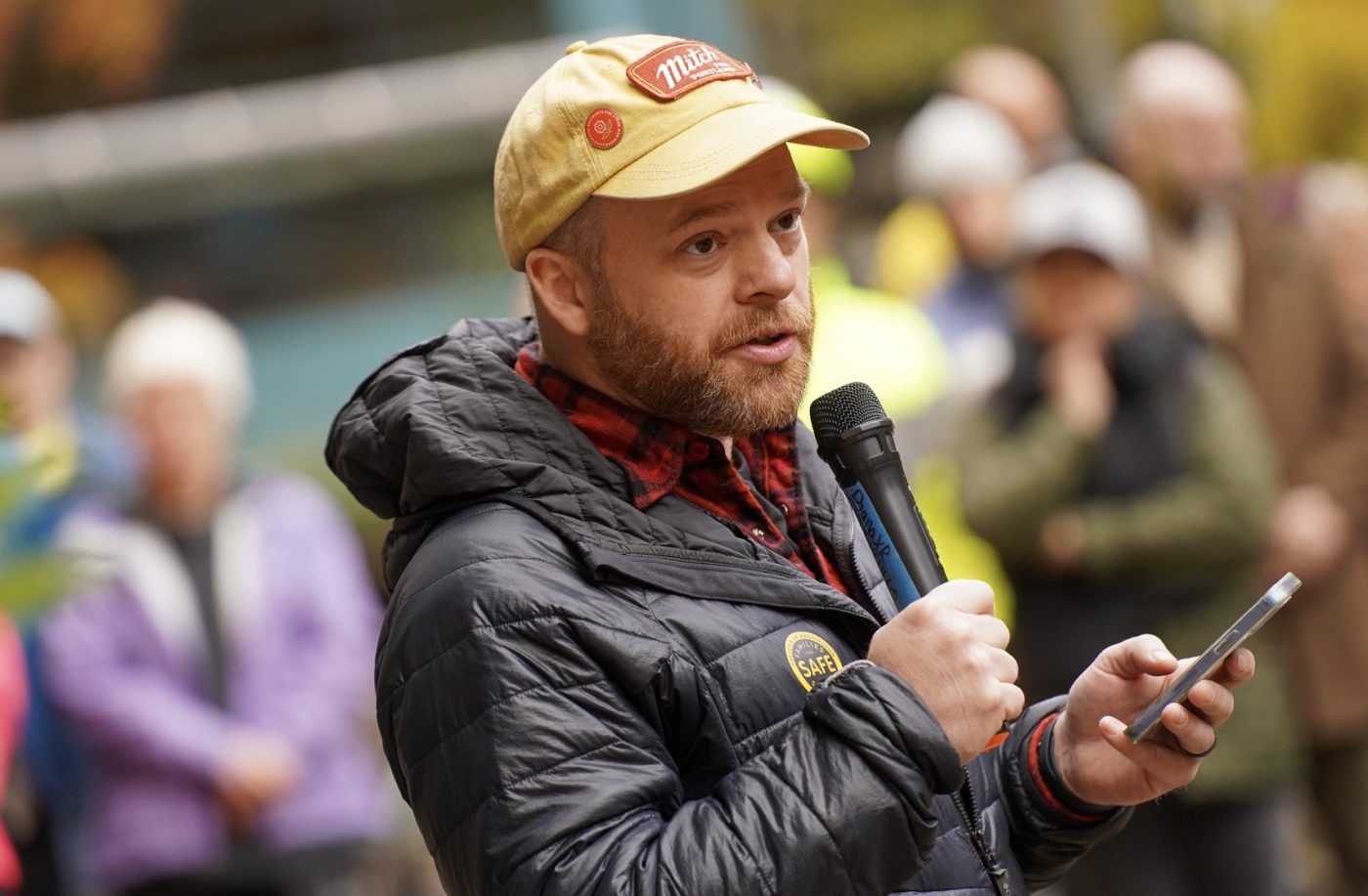
How does being a socialist translate into local transportation policy? Thanks to Portland City Councilor Mitch Green’s political affiliation — he’s a member of Democratic Socialists of America — and his candor at a meeting of the city’s Pedestrian Advisory Committee Tuesday night, we now have a pretty good idea.
Green, who represents District 4 (Sellwood and the westside), is one of four socialists on Portland’s 12-member city council who are beginning to flex their muscle for the people. A cover story in the current issue of Willamette Week states, “Portland’s agenda and discourse is largely being driven by a cohesive bloc of leftists on the council—and at its heart are the socialists.”
Like the text on a huge banner that hung on City Hall during a rally Green attended last month, socialist policy often boils down to “tax the rich.” In transportation terms, at least the way Councilor Green talks about it, socialism means taxing everyone (especially car and truck drivers) a bit more for a road system that distributes more access to more people and offers a wider array of public benefits.
It also means; broadening the transportation tax base, charging the most privileged users (car drivers) more, using right-of-way for the public good (instead of favoring private transport), tying transportation directly to land use and housing goals, not catering to desires of rich and powerful City Hall interests, and going big for transit.
But that’s a too simple summary of Green’s extensive views on transportation. The professional economist and first-time council member who also sits on the Transportation and Infrastructure Committee spent nearly an hour at a committee meeting Tuesday night and spoke on many topics — from parking pricing to zoning, and from superblocks to social housing. What follows is my recap of his comments at that meeting…
Green’s interest in transportation is animated by the current political tilt of City Council and how he believes it’s primed for big moves. “I believe that we’re in a pretty important historical moment in the city where we need to be building infrastructure, and we need to be building institutions that are broadly inclusive and unabashedly so,” Green said as he laid out his vision in an opening statement.
In standing up for people (he wants to make Portland a “refuge for people who look different”) and transportation issues (biking, transit, road taxes) that might be targeted by powerful interests (at the national or local levels), Green repeated several times that he will stand by his admittedly “controversial ideas.”
“For instance if we figure out an equitable pricing model for transportation,” Green said, “I want to be there to say ‘I’ll take the political hits for you, and I’ll champion this for you, because we need to do this to pay for our things.'”
Green knows pushback on higher road taxes and fees are coming, but he doesn’t want to waste time on those who don’t share his core values. “I don’t need to worry about reacting to every phone call from everyone who hates every little micro decision that we do,” he explained. “I have my values. I will communicate them clearly, and I’m going to stand by those.”
Green’s tenure on council has already included support for higher parking prices and rideshare trip fees. He admitted those stances aren’t politically popular. So why does he support them? Green feels like in many cases the critiques come from the few and the benefits are spread to the many. Here’s how he explained it Tuesday night:
“I think there’s enough people in Portland who want a world class transit system and a world class pedestrian infrastructure system, that they’re willing to pay a little bit more. They understand the relationship between paying for more and making sure that we are enabling our bureaus to do what they do best — which is stay the course on a good plan and not get derailed because somebody at the Benson Hotel called a commissioner.”
Later in the meeting, Green expanded on that last line (which is reference to the Broadway Bike Lane Scandal and former Commissioner Mingus Mapps):
“I think those [projects like SW Broadway and 4th Ave bikeways] are always under threat by the business lobby picking up the phone and saying, ‘I don’t like this, take it away.’ Or you can get a cranky condo owner who organizes a letter writing campaign and gets, like, a plaza taken away. I don’t like that. I’m willing to talk to those constituents and say, ‘No, this is a good thing to commit to.’ I’m going to defend it… The model that we’ve had in this city, where just a few connected people can pick up a phone and stop a good project has got to end. It must end, and that’s what I’m trying to do.”
Throughout his visit with the Pedestrian Advisory Committee, he made it clear he wants to be seen as a champion for walkers and transit users. “I want you guys to think of me as someone who’s willing to stick my neck out a little bit and try something in the hope that it improves the lives of people who are trying to move around this city more safely.”

So what exactly would Green like to do? It starts with a lot fewer cars on our roads:
“Anything we do that is not optimizing getting people out of cars and getting them to a bus stop, or allowing them to walk from their neighborhood to a school with their kids, or do a bike bus, or ride, walk and roll around our city — If we are not prioritizing that —then every other little piddly, marginal thing we do for the climate is much less important, because most of our emissions come from automobiles…
Maximizing opportunities for people get out of their cars is going to always be a priority for me, and I think it’ll save us money in the long run.”
Green also repeated his idea first shared back in February that Portland should ban cars altogether on some streets as a way to reduce ongoing maintenance liabilities. Since then, he’s fleshed that idea out and says he wants to create large superblocks (several blocks where driving is prohibited) in places that will see redevelopment thanks to newly formed tax increment financing (TIF) districts. “It’s a missed opportunity if we don’t see [TIF districts] as an opportunity to steer towards superblocks in east Portland, superblocks downtown and the like,” he said.
Green’s Chief of Staff (and former transportation planner) Maria Sipin chimed in to add that perhaps PBOT should test out a superblocks pilot during the Downtown Sunday Parkways in mid-September. “Why not try this out?” Sipin wondered out loud. “I think downtown Portland is a really good place to start.”
Populism is central to Green’s politics. He sees the idea of taking streets away from a few people driving private cars and giving them to many people with a diversity of uses and public benefits, as an obvious and necessary shift.
Just like his staffer’s “let’s try this out,” comment, Green mentioned last night how he’s “really moved by the tactical urbanism movement.” “Let’s just try some cheap stuff and see if it works,” he said. “And if it doesn’t work, jettison it. If it does work, great. Let’s build the program out of it, and then commit city resources to it.”
“If you’re going to drive a car across town to go to a Timbers game or a venue, you have the means to do so, right? Generally speaking. And you should have to pay some of the cost of the congestion that creates.”
In that spirit, Green threw out an idea for the forthcoming James Beard Public Market. Since the location is adjacent to busy streets like Alder and Morrison Bridge freeway ramps, Green suggested it might be a good location to test mechanical bollards that would keep drivers out and allow the city to test “carfree market days.” “And then just kind of see how people vibe with that kind of space,” he added.
Even the Sidewalk Improvement and Paving Program (SIPP) Green co-sponsored and shepherded through council back in May, is seen as something that can start small and then grow as it becomes more popular. While Green and Councilor Loretta Smith are pushing for $200 million in bonding authority to fund projects in the SIPP program, Green would support an even smaller bite at the apple in the interest of urgency, because he believes, “If we do some part of SIPP, it’s better than doing no part of SIPP, because my theory is that if you deliver meaningful benefits to peoples’ lives immediately, then they they grow their confidence in government.”
Green’s not impatient, he seems to have a calculated urgency borne from frustration with the status quo and traditional pace of change. “For me, the motivation behind SIPP,” he shared, “Was to say, ‘I’m just going to come in right away and see if I can accelerate investment of infrastructure in southwest Portland and figure out how that works politically’.”
He referred to it as “positive incremental progress.” But don’t mistake this for a fear of hooking much bigger fish. Green is a systems thinker. He sees transportation as a web of interconnected policies. Take his approach to parking pricing downtown. In the comments below, he talks about his belief that certain types of parking should be much more expensive, then he connects parking prices to the need to improve regional transit in order to lessen the cost burden on people who live far from the central city.
“My prerogative is that we lobby for the [transit] tunnel. Or we lobby for an elevated, downtown, grade-separated thing. Whatever it’ll take. I’ll take either.”
“I think that we need to invest in and be pretty aggressive on things like dynamic pricing for parking downtown,” Green explained. “Recently PBOT raised parking fees and we’ve already gotten a lot of pushback in our inboxes over that. But I’m going to hold the line for that, because there’s an ability-to-pay question: If you’re going to drive a car across town to go to a Timbers game or a venue, you have the means to do so, right? Generally speaking. And you should have to pay some of the cost of the congestion that creates.”
Green would then take the additional parking revenue (which he also referred to as “congestion pricing” and “scarcity pricing”) and use it to fund TriMet bus service expansions. “You pair pricing of parking and road use with subsidizing public transit — because it’s a long ways to ride a bike from outer east Portland into the westside, even if you have an e-bike, I recognize that — but we have an opportunity. We don’t have any money, but we have an opportunity politically, to steer TriMet priorities and the city’s land use priorities to building a proper regional [transit] system.”
Then Green connected the need for better regional transit to the larger issue of why the TriMet system is inherently inefficient for longer trips:
“Our system cannot support regional transit because we have at-grade light rail that goes through downtown and a hub-and-spoke model. You just simply cannot get from east Portland to anywhere on the westside in any meaningful amount of time. And that’s why people drive. My wife works at Nike, she would love to take the MAX, but if she was going take the MAX her commute would be an hour and a half one away with all the connections.”
How would Green help Portland make the MAX faster? He’d lobby for a transit tunnel under downtown and the Willamette River — a dream of transit reformers that would speed bus and light rail trips and alleviate the current bottleneck on the 113-year old Steel Bridge. But in true Green fashion, he didn’t just toss out this idea. He’s actually thought it through. “My expectation in the next [state] legislative session is that City Council sets the legislative agenda, not the mayor, which is what happened last time,” Green said. “And my prerogative is that we lobby for the tunnel. Or we lobby for an elevated, downtown, grade-separated thing. Whatever it’ll take. I’ll take either.”
To create space for the politics and free up funding for such a bold project idea, Green said when he and his council colleagues are able to influence Portland’s state legislative agenda, he would, “De-prioritize the big freeway expansion projects” and instead, “invest in updating and rationalizing the TriMet system, because then we get the TOD right.”
“TOD” is transit-oriented development, the idea that transit investments should focus on places with the commercial and housing density required to make transit successful. Going a step further, Green said he wants to pair transit-oriented development with social housing — a model popular in major European cities like Paris where housing is owned by the public and managed for community benefits over individual profits (back in April, Green and Councilor Candace Avalos sponsored a successful City Council resolution to study the idea). For Green, an added benefit of social housing near transit hubs is that it sets the table for a different paradigm for transportation revenue: one that relies less on people buy gas for cars and paying car-related fines and fees; and relies more on transportation as a basic city service akin to water, sewer, or electricity.
Green said he’s “Thinking about pairing social housing with transit-oriented development, with a growth policy that that enables us to to really spread the cost of our infrastructure of a larger base…we’re going to need a growing tax base, and you can only get that if you encourage development in the city.”
Green’s dream of city-owned apartment blocks adjacent to transit hubs could be years away, but a proposal for Portland to use a utility fee approach to road funding is likely coming soon. I’ve been tracking comments from councilors and transportation bureau staff in recent months and the idea keeps coming up. Green made it sound imminent on Tuesday night when he said, “There’s a proposal that is going to come out…. called the transportation utility fee, which is this idea of saying we need a stable revenue source.” “Let’s get rid of the gas tax, because it’s not stable anymore,” Green continued. “And let’s just add a constant fee that we spread out to as many ratepayers as possible to spread the burden out and that provides a steady flow of revenue to PBOT that if we’re willing to bond against it — which I think we should — you can really start to build some infrastructure.”
The arc of the case Green laid out Tuesday night demonstrates his ability to go from specific policy ideas (parking prices downtown) to higher-level problems (inefficient transit for longer trips), connect them to the systems level (land use and housing), then bring it back to a massive challenge (lack of transportation funding) and a way to solve it (a utility fee). It’s rare to have a local elected official who can so confidently connect the dots between these issues.
“It’s hard to turn a big ship on a dime,” Green said at the end of the meeting after describing how he wants to turn the vacant building at SW 4th and Washington into dense social housing. “But what I don’t want us to do is continue to defer and kick these good ideas down the road and pretend like they’re not urgent, because they are.”


